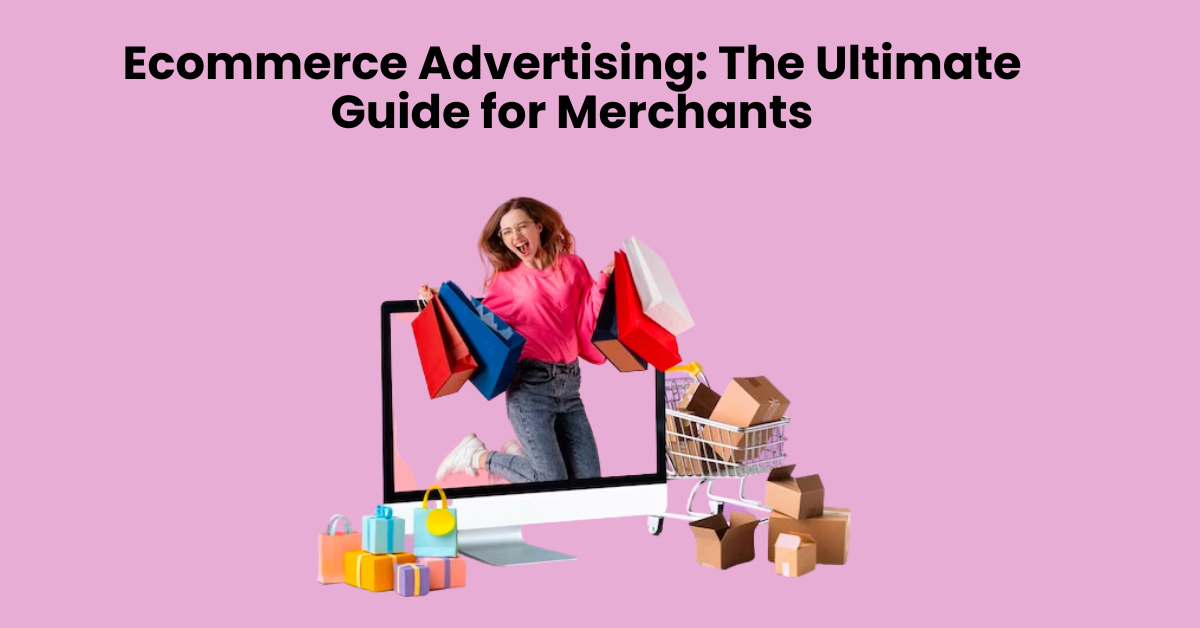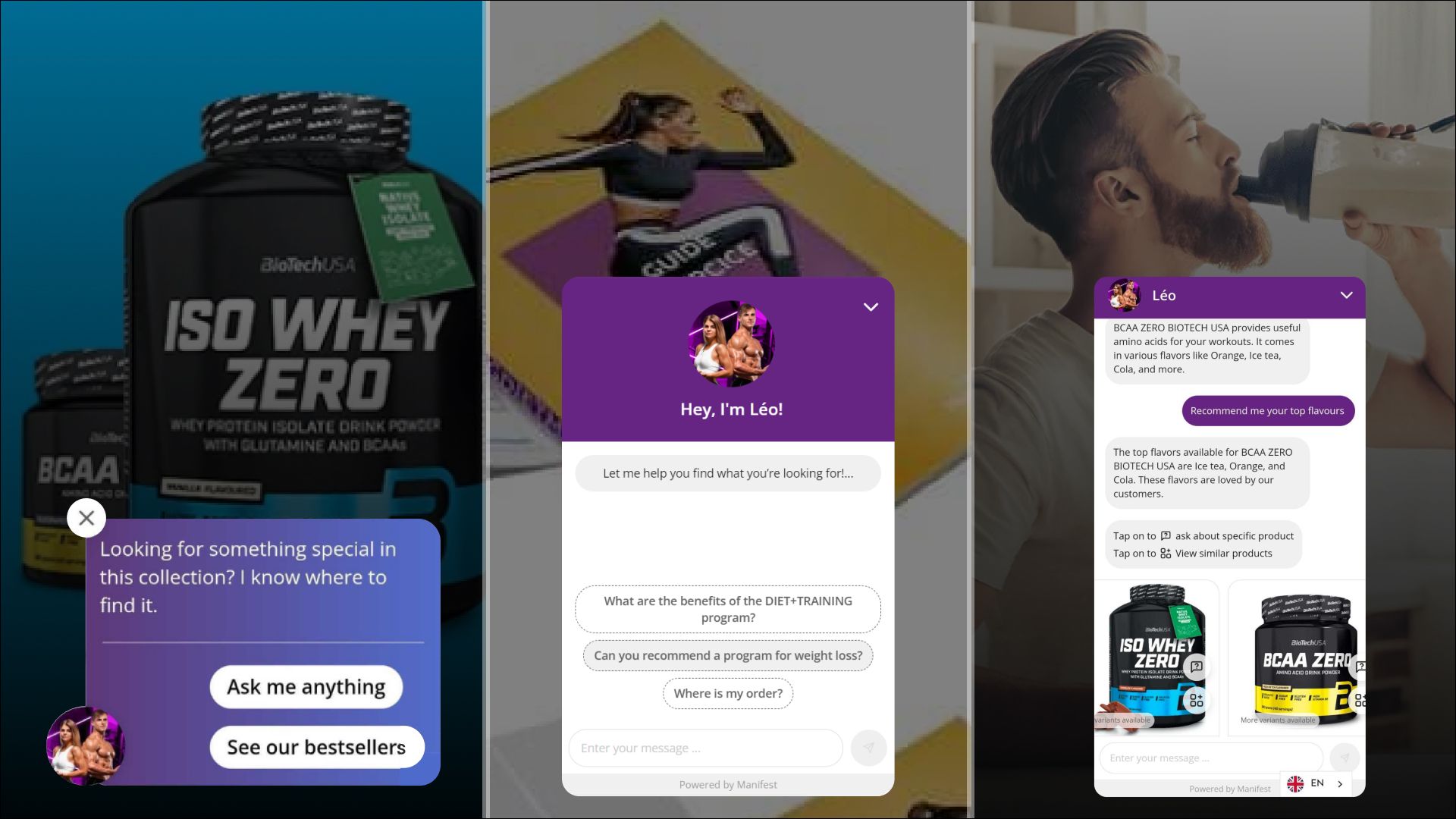Ecommerce Advertising: The Ultimate Guide for Merchants

Ecommerce advertising is a rapidly growing industry, with revenue expected to reach $527 billion by 2024. This means that there has never been a better time to invest in ecommerce ads.
If you're ready to take your ecommerce business to the next level, read on to learn everything you need to know about ecommerce advertising solution in this ultimate guide.
What is ecommerce advertising?

E-commerce advertising refers to the marketing and promotional activities carried out by online businesses to attract, engage, and convert customers into making online purchases. This type of advertising for ecommerce encompasses various strategies and channels, including paid advertising, social media marketing, email marketing, search engine optimization (SEO), content marketing, and more, all aimed at driving traffic to e-commerce websites, increasing sales, and growing the online business.
Types of ecommerce advertising
There are several types of e-commerce advertising strategies and channels that businesses can use to promote their online stores and products. Here are some of the common types of e-commerce advertising:
- Paid Search Advertising: This includes pay-per-click (PPC) ads on search engines like Google and Bing. Businesses bid on keywords relevant to their products, and their ads appear when users search for those keywords.
- Display Advertising: Display ads are visual banners, images, or videos placed on websites, often through ad networks like Google Display Network. They are used to raise brand awareness and drive traffic.
- Social Media Advertising: This involves promoting products on social media platforms like Facebook, Instagram, Twitter, and Pinterest. Businesses can target specific demographics and interests to reach potential customers.
- Email Marketing: E-commerce businesses use email to send newsletters, product recommendations, and promotional offers to their subscriber lists. Email marketing can be highly effective for customer retention and engagement.
- Content Marketing: Creating valuable content, such as blog posts, videos, and guides, that not only educates but also promotes products subtly. Content marketing can drive organic traffic and enhance brand authority. When it comes to creating engaging videos for your content marketing strategy, using a reliable video maker can streamline the process and help you produce professional-quality videos effortlessly.
- Affiliate Marketing: Businesses partner with affiliates who promote their products on their websites or through other marketing channels. Affiliates earn a commission on sales they generate.
- Influencer Marketing: Collaborating with social media influencers or bloggers to promote products to their followers. Influencers can provide authentic reviews and recommendations.
- Shopping Comparison Engines: Listing products on shopping comparison websites like Google Shopping or Shopzilla, where users can compare prices and features before making a purchase.
- Retargeting/Remarketing: Displaying ads to users who have previously visited your website or shown interest in your products. This helps to re-engage potential customers and increase conversions.
- Native Advertising: Creating ads that match the look and feel of the content where they are placed, providing a more seamless customer experience.
Ecommerce advertising platforms
There are many different ecommerce advertising platforms available, each with its own strengths and weaknesses. Here is a brief overview of some of the best ecommerce advertising platforms:
- Google Ads: Google Ads is the most popular ecommerce advertising platform, and for good reason. It offers a wide range of targeting options and campaign types, and it allows you to reach a massive audience of potential customers. However, Google Ads can be expensive, and it can be difficult to set up and manage campaigns effectively.
- Amazon Advertising: Amazon Advertising is another popular ecommerce advertising platform, especially for businesses that sell on Amazon. Amazon Advertising offers a variety of ad formats, including sponsored products, sponsored brands, and display ads. However, Amazon Advertising can be competitive, and it can be difficult to get your ads seen by the right people.
- Facebook Ads: Facebook Ads is a great ecommerce advertising platform for businesses that want to reach their target audience on Facebook and Instagram. Facebook Ads offers a variety of targeting options and ad formats, and it can be a very effective way to drive traffic to your website and generate sales.
- Bing Ads: Bing Ads is a similar platform to Google Ads, but it is less competitive and less expensive. Bing Ads can be a good option for businesses that are looking to reach a wider audience without breaking the bank.
- Pinterest Ads: Pinterest Ads is a great ecommerce advertising platform for businesses that sell visual products, such as clothing, home decor, and food. Pinterest Ads offers a variety of ad formats, including promoted pins and shoppable pins.
- TikTok Ads: TikTok Ads is a newer ecommerce advertising platform, but it is quickly gaining popularity. TikTok Ads can be a great way to reach a younger audience and generate brand awareness.
- Snapchat Ads: Snapchat Ads is another newer ecommerce advertising platform that can be a great way to reach a younger audience. Snapchat Ads offers a variety of ad formats, including sponsored filters, sponsored lenses, and sponsored stories.
Ecommerce advertising strategies

Effective e-commerce advertising models can significantly boost sales and brand visibility. Here are the top 10 strategies for successful e-commerce advertising:
- Search Engine Marketing (SEM):
- Utilize pay-per-click (PPC) advertising on platforms like Google Ads and Bing Ads to appear at the top of search results for relevant keywords.
- Social Media Advertising:
- Run targeted ad campaigns on platforms like Facebook, Instagram, and Pinterest to reach a wide audience and retarget past visitors.
- Email Marketing:
- Use email campaigns to promote products, share special offers, and build long-term relationships with customers.
- Content Marketing:
- Create high-quality content, including blog posts, videos, and guides, to attract and engage your target audience. Include product recommendations naturally.
- Retargeting/Remarketing:
- Re-engage visitors who have interacted with your site but didn't make a purchase with personalized ads.
- Influencer Marketing:
- Collaborate with influencers or micro-influencers to promote your products authentically to their followers.
- Affiliate Marketing:
- Set up an affiliate program that allows partners to earn commissions by driving traffic and sales to your e-commerce store.
- Shopping Comparison Engines:
- List your products on shopping comparison platforms like Google Shopping to reach users comparing prices and features.
- User-Generated Content (UGC):
- Encourage customers to create content like reviews, images, or videos featuring your products to build trust and social proof.
- Video Advertising:
- Utilize video content for ad campaigns on YouTube and social media to showcase products and engage your audience.
Ecommerce advertising trends
Ecommerce advertising trends in 2024 are expected to be focused on the following:
- Hyper-personalization: Advertisers will use data and AI to create more personalized ads for each individual customer. This will include targeting ads based on browsing history, purchase history, and other demographic and behavioral factors.
- Omnichannel marketing: Advertisers will increasingly use multiple channels to reach customers, such as search engines, social media, email, and display ads. This will allow them to reach customers wherever they are and create a more seamless shopping experience.
- Video ads: Video ads will continue to grow in popularity, as they are a highly engaging and effective way to promote products and services. Advertisers will use video ads to tell stories, showcase their products, and connect with customers on an emotional level.
- Influencer marketing: Influencer marketing will continue to be a popular way to reach customers and promote products. Advertisers will partner with influencers who have a strong following in their target audience.
- Voice search: Voice search is becoming increasingly popular, and advertisers will need to optimize their ads for voice search. This means using long-tail keywords and conversational language in their ad copy.
Here are some specific examples of how ecommerce advertisers are using these trends today:
- Personalized ads: Netflix uses data and AI to recommend movies and TV shows to each individual user. This helps Netflix to keep users engaged and coming back for more.
- Omnichannel marketing: Amazon uses multiple channels to reach customers, such as its website, mobile app, and brick-and-mortar stores. This allows Amazon to reach customers wherever they are and create a more seamless shopping experience.
- Video ads: Nike uses video ads to tell stories and showcase its products. For example, Nike's "Dream Crazy" ad campaign features Colin Kaepernick and other athletes who are challenging the status quo.
- Influencer marketing: Glossier partners with influencers to promote its products. For example, Glossier's "Boy Brow" product has become popular thanks in part to endorsements from influencers.
- Voice search: Walmart allows customers to order products using voice search on its website and mobile app. This makes it easy for customers to shop for products without having to type them out.
How to grow your ecommerce business with AI

Growing your e-commerce business with Manifest AI involves harnessing the power of artificial intelligence to enhance various aspects of your online store. Here's how Manifest AI can help your e-commerce business thrive:
- Personalized Shopping Experiences: Manifest AI empowers your e-commerce platform to analyze customer data, including browsing behavior, purchase history, and preferences. With this information, it can create highly personalized shopping experiences. Tailored product recommendations, seamless product discovery ensure that customers find what they're looking for quickly and effortlessly.
- Personalized Discount Coupons: Manifest AI generates personalized discount coupons based on customer behavior and preferences. By offering tailored incentives, you encourage repeat purchases, increase customer loyalty, and drive sales.
- Multilingual Customer Support: Manifest AI enables multilingual customer support, breaking language barriers and making your e-commerce store accessible to a global audience. Customers from different linguistic backgrounds can receive support and information in their preferred languages, fostering international growth.
- Customer Support Chatbots: AI-powered chatbots provide immediate customer support, answering questions and guiding shoppers through their purchase journey. This improves customer satisfaction, reduces cart abandonment, and allows you to serve customers around the clock.
- Inventory Forecasting: Predicting inventory needs is a crucial aspect of e-commerce. Manifest AI utilizes advanced algorithms to forecast demand accurately, preventing stockouts and overstock situations. This minimizes losses and maximizes efficiency.
- Search and Product Discovery: Enhance the search and product discovery experience on your e-commerce site. Manifest AI utilizes natural language processing and image recognition to help customers find products easily. This results in higher conversion rates and improved user satisfaction.
Conclusion
Ecommerce advertising is a powerful tool that can help merchants of all sizes reach their target audience, drive traffic to their websites, and boost sales. However, with so many different platforms and strategies to choose from, it can be difficult to know where to start.
This guide has provided a comprehensive overview of ecommerce advertising, covering everything from the different types of platforms and strategies to advanced techniques and trends. By now, you should have a good understanding of how to use ecommerce advertising to grow your business.

.png)
